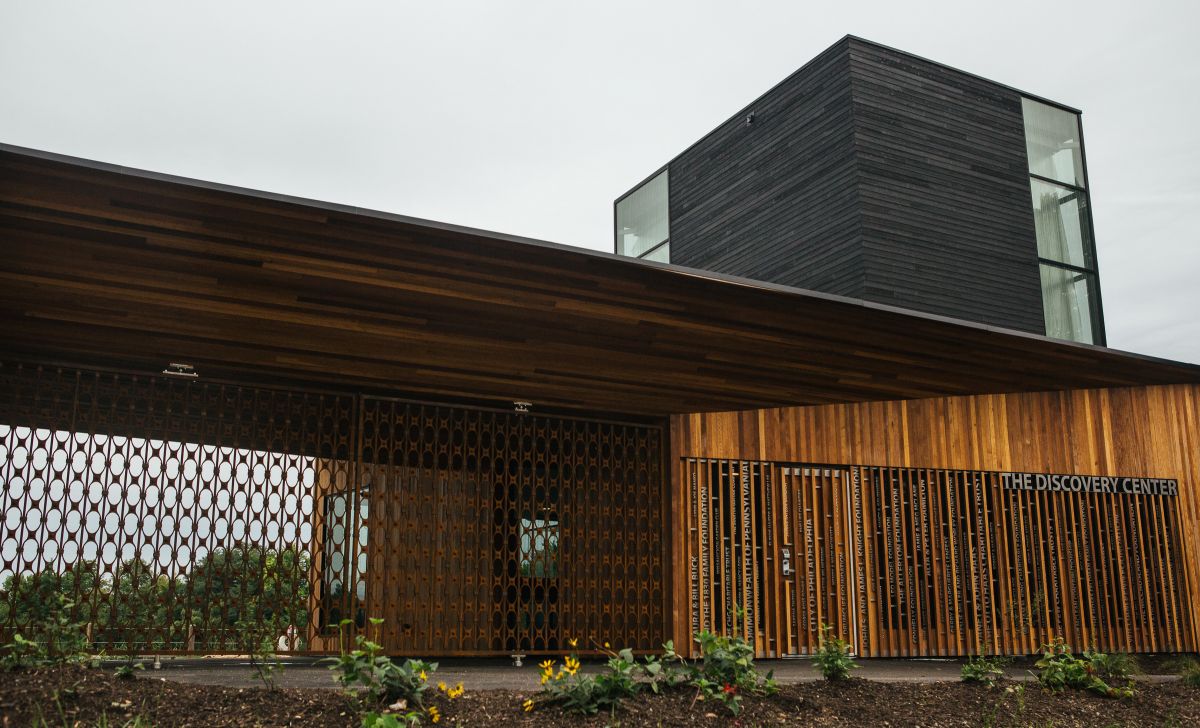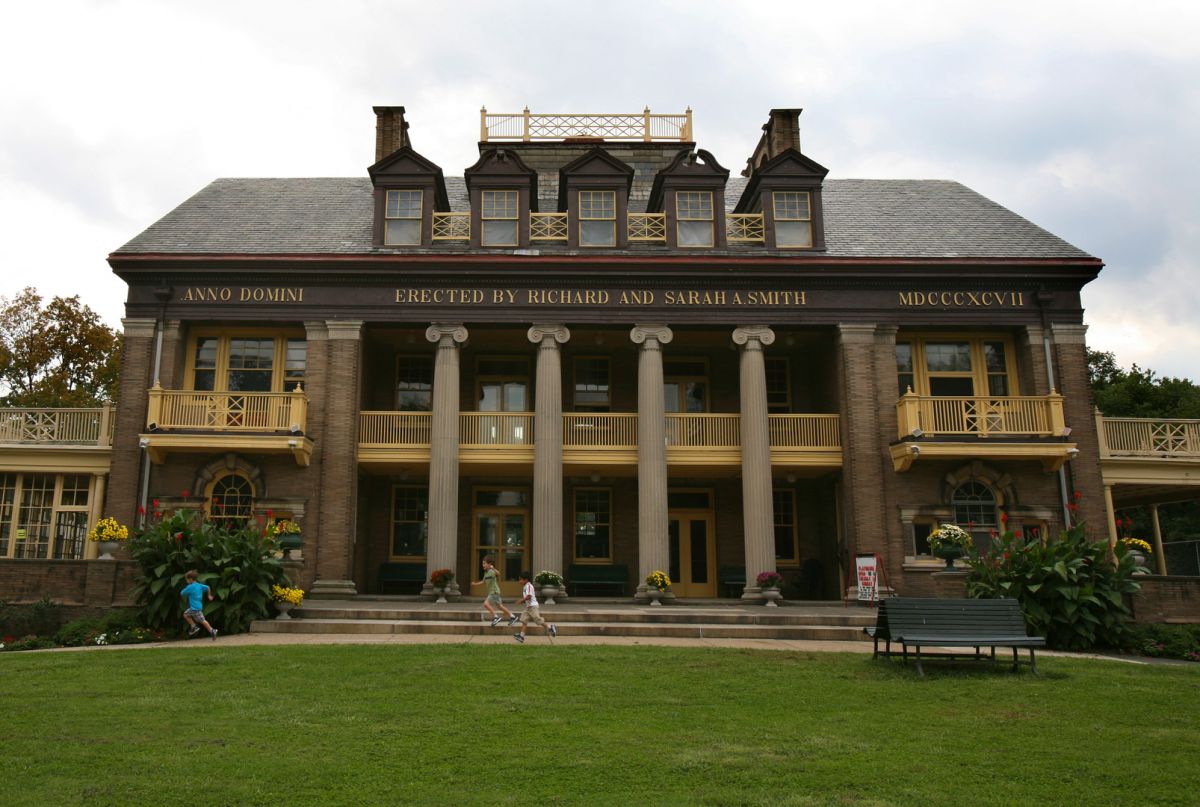Blog
From Parks to Porches
A lot has changed since 1961 when the William Penn Foundation made a grant to support the creation of a new public park in Whitpain Township, Montgomery County – the hometown of F. Otto Haas, son of the founder of the Rohm and Haas Chemical Company and the William Penn Foundation. That grant represented the beginning of a nearly 60-year legacy of grantmaking in support of public space and open space conservation that continues to this day.
There are few public landscapes in our region that have not benefitted from the support of the William Penn Foundation over the succeeding decades - from the Morris Arboretum to the Heinz National Wildlife Refuge, from Schuylkill Greenway to Bartram’s Garden. In the decade between 2001-2011 the William Penn Foundation invested $25 million in public space improvements in Center City, including Independence Mall, Franklin Square, Logan Square, Dilworth Park, the Benjamin Franklin Parkway, the Schuylkill Banks and the Central Delaware Riverfront.
Seeing beneficial effects of these public space investments on the lives of Center City residents and visitors, the Foundation’s board directed the staff to develop an investment strategy to expand access to high-quality public spaces for neighborhoods and communities outside of Center City. This strategy, called Great Public Spaces, was launched in 2013 with the assertion that all Philadelphians deserve access to high-quality parks, playgrounds, and libraries and that these kinds of civic amenities are essential ingredients for healthy and vibrant communities. The Great Public Spaces strategy was created with an intentional focus on equity, and prioritizing investment in communities that have experienced disinvestment.

Mayor Kenney’s bold Rebuilding Community Infrastructure Initiative - or Rebuild - provided the Foundation with an unprecedented opportunity to extend our work even further into neighborhoods all across the city. The scale at which the program plans to improve the city’s libraries, recreation centers and playgrounds warranted an unprecedented and historic $100 million commitment by our board – one of the largest grants ever for parks and public spaces in the United States.
While we celebrate the renewal of the city’s parks and playgrounds, libraries, and recreation centers, we have also long understood that there are significant programmatic risks associated with our investments in public space, especially those spaces and places that serve particular communities.
The first risk we recognize is that the long-term sustainability of our investments are contingent on stability of local communities. That is, neighborhoods that are or have experienced chronic disinvestment and deterioration may not have the capacity to be effective stewards or help maintain renovated public spaces.
The second - and perhaps more troubling risk - is that the William Penn Foundation’s investments in high-quality community amenities may trigger unintentional community change, potentially attracting gentrification and encouraging displacement, and therefore, preventing the Foundation from reaching its goal of expanding access to low-income and under-served communities.
As the Foundation’s investments have begun to take shape on the ground, our board felt it was imperative to grapple with the inherent risks of our Great Public Spaces strategy and develop responses to them.
Over the past year under the direction of Judilee Reed, the Director of our Creative Communities program, and Cara Ferrentino, the Foundation Program Officer who manages our public space portfolio, our board approved a range of exploratory grants intended to identify and elevate approaches to promoting neighborhood stabilization and resident retention in communities where the Foundation has made significant public space investments.
These include:
- A grant to the Bread and Roses Community Fund to launch an Equitable Public Space Giving Project to support community involvement in public space development and to inspire local philanthropic giving. The grant will support a two-year Giving Project focused on creating, sustaining, and strengthening public space projects that low-income community members have built to enrich their neighborhoods while building communities' investment (emotional as well as capital) in the public spaces they help create.
- Support for a resident-centered design process for a new public park in the American Street corridor of the Fairhill neighborhood. The Hispanic Association of Contractors and Enterprises (HACE), which will lead the planning effort, will also offer credit counseling to renters living near the park who are interested in local homeownership as one way to respond to resident concerns about potential gentrification resulting from the new park investment.
- Earlier this year our board approved support for the creation of an “Equitable Development Lab” focused on developing strategies for maintaining the affordability and cultural heritage of Chinatown, North Chinatown, and West Poplar and to help mitigate the potential displacement of current residents as the Rail Park continues to grow and expand in the coming years.

Smith Memorial Playground in Philadelphia's Strawberry Mansion neighborhood. Photo by R. Kennedy for GPTMC
Most recently, this spring our board approved a pilot Historic Home Repair effort in the Strawberry Mansion neighborhood adjacent to the Foundation’s significant investments in Smith Memorial Playground and the new Discovery Center at the former East Park Reservoir. Led by the Local Initiative Support Corporation (LISC) in partnership with the Strawberry Mansion Community Development Corporation, the effort has important dual aims - to develop a replicable Historic Home Repair program model that leverages City resources to address critical interior and exterior repair needs, and to model the recommendations of the Mayor’s Historic Preservation Task Force to expand locally-appropriate preservation activities in historic and culturally-significant neighborhoods outside of Center City.
The Strawberry Mansion Historic Home Repair pilot project was developed with the support of the Rhode Island-based 1772 Foundation, a national foundation focused on historic preservation, and the Knight Foundation. In addition to actual physical repairs the pilot will seek to promote better coordination between city services, offer workshops for homeowners to learn about the unique needs of historic homes in Strawberry Mansion, and provide legal support to address tangled titles, estate planning, and credit counseling.
While we continue to believe that highly targeted investments to repair and improve the local community infrastructure of parks, playgrounds, recreation centers, and libraries of the city’s neighborhoods is one of the best ways the William Penn Foundation can contribute to enhancing local quality of life, we equally believe that we cannot ignore the conditions of neighborhoods just beyond the limits of our public space investments.
Although the Foundation alone does not have the capacity to drive major neighborhood stabilization efforts, our hope is that through this exploratory grantmaking new tools, practices, and processes will emerge to ensure that local residents are better equipped to engage in managing the effects of community change and have improved access to existing city services and supports that can help them maintain and stay in their homes and their communities.
Subscribe To Our Blog
Subscribe to our updates and always be in the know!
